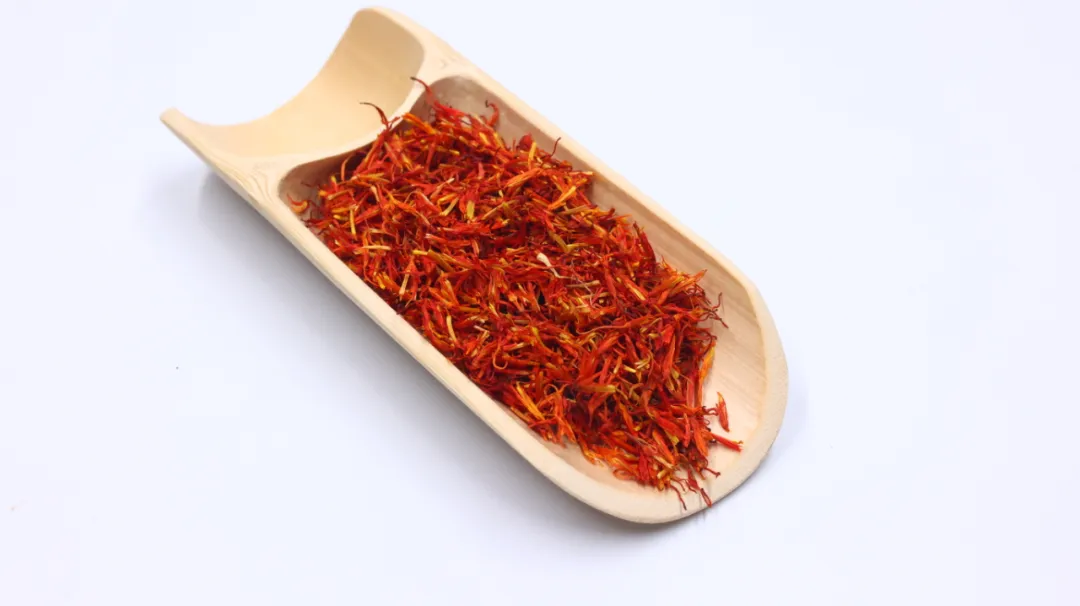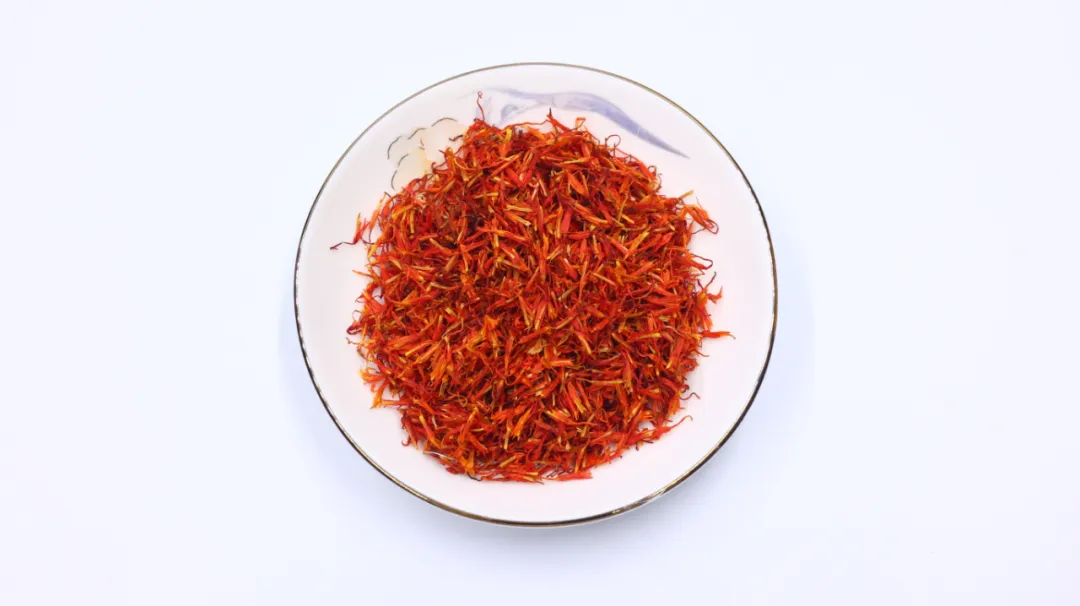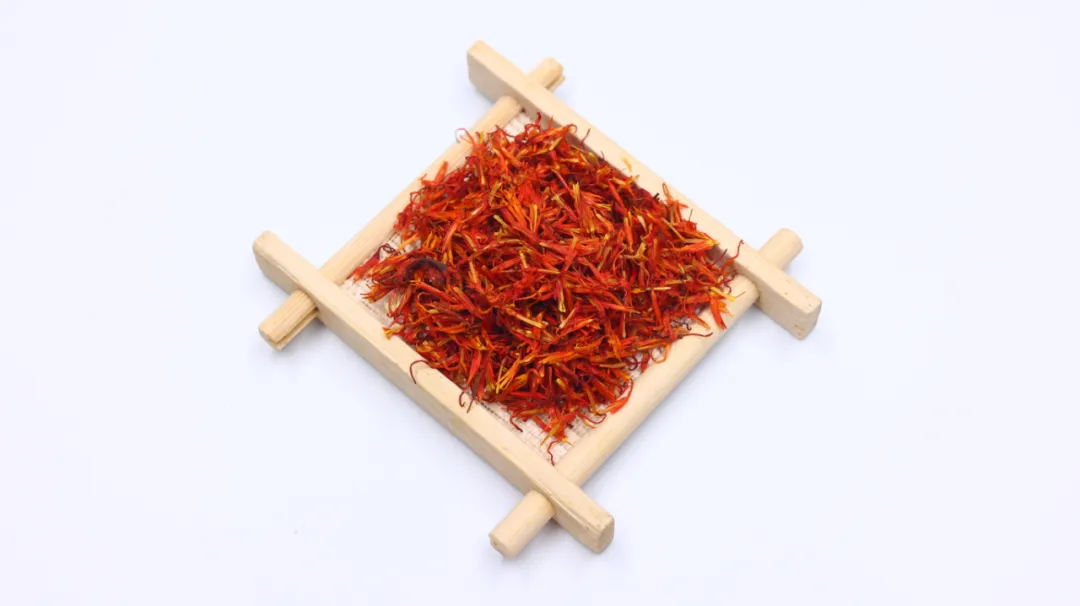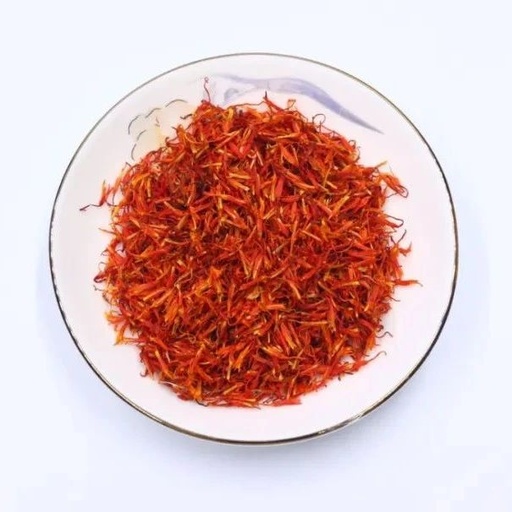Follow and Star ▲Shenxi Garden▼ and grow together with TCM practitioners worldwide
In ancient times, the only red dye available was madder, which is a soil red and requires a more complex dyeing process. However, Honghua (Safflower) produces a “true red” and can be dyed directly onto fibers, making it extremely important among red dyes.
Red was a popular color during the Sui and Tang dynasties. The poet Li Zhong of the late Tang wrote in his poem “Honghua”: “The color of safflower overshadows a thousand flowers, even if it is the blood of a gorilla. The light silk dyed with it is not to be valued, as the ancients advocated frugality and warned against extravagance.” Here, the safflower is mentioned only for its dyeing function, but today we discuss its medicinal properties as a traditional Chinese herb.

Honghua is the flower of the plant from the Asteraceae family. It is cultivated across the country, mainly in Henan, Zhejiang, and Sichuan provinces. It is also known as: red-blue flower, prickly safflower, and grass safflower. The tubular flowers are harvested in May to June when the petals change from yellow to red, then dried in the sun, in the shade, or by baking. The best quality has long petals, bright red color, and soft texture.
Regarding the efficacy of Honghua, it was recorded as early as in the “Compendium of Materia Medica”: “Invigorates blood, moistens dryness, alleviates pain, disperses swelling, and regulates menstruation.” Similarly, in the “Materia Medica of the Medical Classics,” it is noted: “Honghua breaks blood… it is a medicine for regulating blood.”
Traditional Chinese Medicine (TCM) considers Honghua to have a spicy and warm nature, and it enters the Heart and Liver meridians.It has the effects of invigorating blood circulation, regulating menstruation, and alleviating stasis and pain.

Honghua is spicy, dispersive, and warm, making it a key herb for invigorating blood circulation and alleviating stasis and pain. It is known as the “premier herb for activating blood and resolving stasis” and is commonly used in gynecological conditions related to blood stasis. It can be effectively used alone in wine decoction, such as in the formula from the “Golden Chamber” called Honghua Wine, or in the formula Taohong Siwu Decoction from the “Medical Classic of the Medical School,” often combined with Danggui (Angelica Sinensis), Chishao (Red Peony), and Taoren (Peach Kernel) for invigorating blood and regulating menstruation.
Honghua has the effects of invigorating blood circulation, resolving stasis and masses, unblocking blood vessels, and reducing swelling and pain. It is used to treat masses and accumulations, often combined with Sanleng (Sparganium), Ezhup (Curcuma), and Xiangfu (Cyperus) for invigorating blood and resolving masses.
For treating chest obstruction and heart pain, and heart vessel blockage, it is often combined with Guizhi (Cinnamon Twig), Gualou (Trichosanthes), and Danshen (Salvia) for dispersing Yang and resolving blockages, and invigorating blood to alleviate pain.
For treating trauma and pain from blood stasis, it is often combined with Muxiang (Aucklandia), Sumac (Sandalwood), and Ruxiang (Frankincense) for invigorating blood and healing injuries.
For treating boils and abscesses with swelling and pain, it is often combined with Lianqiao (Forsythia) and Zihua Diding (Viola) for clearing heat, detoxifying, and dispersing abscesses.

Additionally, Honghua can break blood with excessive use, while moderate use nourishes blood. In the “Supplement to the Compendium of Materia Medica,” it is recorded: “Honghua… when used sparingly, nourishes blood.” Nourishing blood should be used sparingly, while invigorating blood and resolving stasis should be used more liberally.
Here are some formulas to share regarding the wonderful uses of Honghua:
For treating dysmenorrhea, you can use 6 grams of Honghua and 24 grams of Jixueteng (Spatholobus Suberectus), decocted in water, and take with an appropriate amount of yellow wine.
If treating cough and shortness of breath caused by menstrual irregularities, consider using 4 grams each of Honghua, Huangqin (Scutellaria), and Sumac, and 3 grams of Tianhuafen (Trichosanthes Root), decocted in water and taken on an empty stomach.
For treating fetal death and retained placenta due to febrile diseases, you can use Honghua wine to make a decoction and drink two to three cups.
Honghua can be considered a good medicine for women’s health, but it is important to note that pregnant women should not use Honghua. Additionally, those with a tendency to bleed should also avoid using Honghua. Although Honghua is beneficial, it should be used appropriately for the best results!
Warm Reminder: This article represents the author’s views and does not reflect the position of this platform. This article is for knowledge sharing only and does not constitute a recommendation for any medication or treatment. It cannot replace medical advice, and please do not use medications blindly. This platform does not bear any responsibility for any consequences arising from this. If you need diagnosis and treatment, please visit a local hospital.
END
——Utilizing TCM for a Healthy Life, Share Wonderful Content Widely——↓TCM Changes Lives,Good Products Enter Life↓Learn TCM, There is a Future
↓FollowPublic Account @Shenxi Garden Service Account Set asStarred↓
↓For more communication, pleasefollowVideo Account↓
Copyright Statement:(1)All images and texts are original and authorized works. Please do not use without authorization.(2)Please contact us for authorization; We welcome sharing in WeChat Moments.


